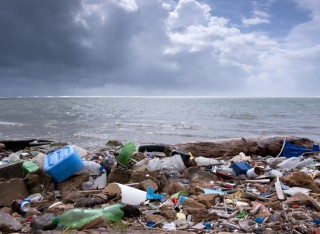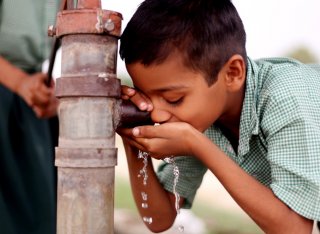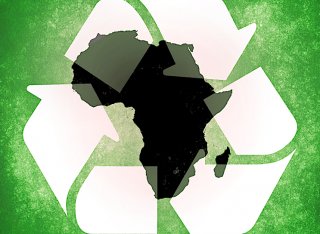
Professor Rosalind Malcolm
Academic and research departments
Surrey Law School, About the Surrey Centre for International and Environmental Law.About
Biography
I am an environmental lawyer and I specialise in looking at the ways law can be used to protect the environment. Recently I have been working on the 'wicked problem' of the polluting waste from plastics and how a circular economy might help to stop the problem of waste. So I look at laws around the ecodesign of products and how they can be implemented to stop the production of waste and pollution. I look at the whole governance frameworks for environmental law including not just the legislation but policy, implementation, enforcement and compliance as well as the impact of property rights. I have been working on the rights to water and sanitation and how they can be used to ensure a decent standard of living for people especially in developing countries. I believe that we will not solve the problem of the degradation of the earth unless we work across disciplines seeking solutions together so I specialise in multidisciplinary research working with social and natural scientists and engineers.
I am Co-Director of the Surrey Centre for International and Environmental Law, a research grouping of individuals and organisations engaged in research, teaching and consultancy into environmental regulation, compliance and enforcement. I also co-direct the Governing Plastics Network jointly with the University of Nairobi, Kenya.
I am a Fellow of the Institute for Sustainability at the University of Surrey and I also practice as a barrister from Guildford Chambers.
University roles and responsibilities
- Professor of Law
- Co-Director of Surrey Centre for International and Environmental Law
- Co-Director, Governing Plastics Network
ResearchResearch interests
- regulatory frameworks for environmental management, compliance and enforcement
- ecodesign laws
- governance of plastics waste
- operationalising rights to water and sanitation
- property rights in environmental media
- food safety law
- statutory nuisance law
Current research projects include:
Undergraduate Sustainability Research Opportunities Programme 2022: Environmental, Social Governance principles for law firms (£2000) Co-PI
ESRC Impact Accelerator Account “STOP Single Use Plastics: using stories to improve the governance of plastics pollution” (2022-2023) (£23,000). PI
Recently completed projects include:
AHRC/GCRF, The Wicked Problem of Plastics & the Discourse Surrounding its Governance (AH/T008423/1) (PI: Prof Rosalind Malcolm, Surrey; Co-Is: Dr Itziar Castello-Molina, Surrey; Prof Nicholas Oguge, CASELAP, University of Nairobi, Kenya) (2020-2022)
EPSRC Institutional Sponsorship “Testing Tools for Eliminating Future Plastics Waste” (1 September 2021 – 1 March 2022, £15,000 (£3000 to Surrey)). PI.
UKRI COVID-19 Grant Extension Allocation in respect of the ESPRC/GCRF project: GCRF Plastics Pollution Governance Framework Network (RG2018). (1 July 2021 - 30 September 2021, £11266). PI.
UKRI COVID-19 Grant Extension Allocation in respect of the AHRC / GCRF project: The Wicked problem of Plastics and the Discourse surrounding its Governance, (1 July 2021 - 30 September 2021, £13,455) PI.
QR Global Challenges Research Fund "Building collective ownership of single-use plastics waste in youth communities: case studies from Kenya, Jamaica and Malawi" (1 February 2021 – 31 July 2021, £86,000). PI.
QR Global Challenges Research Fund ‘Improving Water Safety Planning: Data to decisions’ – case studies from Uganda and Brazil’ (1February 2021 – 31 July 2021, £50,000). Co-I.
EPSRC/GCRF Plastics Pollution Governance Framework Network (EP/T003529/1) (PI: Prof Nicholas Oguge, CASELAP, University of Nairobi, Kenya; Joint PI: Prof Rosalind Malcolm, Surrey; Co-I: Dr Noreen O’Meara, Surrey; (2019-2021)
QR GCRF ‘A rapid, high level analysis of water safety planning in rural communities using groundwater sources in Uganda and Malawi.’ (2019 – 2020) (£95,529)
Society for Legal Scholars Small Projects and Events Fund 2018 (£2,500.00) for organising a conference titled ‘Rethinking Property Approaches in Resources for the Circular Economy’ (June 2019) with Prof Alison Clarke (Surrey) and Dr Katrien Steenmans (Coventry)
Workshop funded by Universities of Surrey, Essex and SOAS, 2 June 2018. ‘Designing Law and Policy Towards Managing Plastics in a Circular Economy’
Undergraduate Sustainability Research Opportunities Programme 2018-19 ‘Regulatory instruments around single-use plastics’ (£2000 UG student bursary awarded to Hifza Younis)
D-Box: Demining tool-BOX for humanitarian clearing of large scale area from anti-personal landmines and cluster munitionsFP7 programme (FP7-SEC-2011.1.3-3); (Co-investigator, 3 years; 2012-2015)
Climate Change: Science and Policy - Collaboration with North Carolina State University. Surrey Institute of Advanced Studies and British Council PMI2 UK-US New Partnership funding.
3-K SAN: “Catalysing self-sustaining sanitation chains in informal settlements in Kigali, Kisumu and Kampala” (http://www.3ksan.org/). European Water Initiative ERA-NET SplashCo-investigator (April 2011 - March 2014)
“The establishment of legal frameworks for independent water providers in Kenya and Ethiopia”(Leverhulme Trust) with Robens Centre for Public and Environmental Health and the Centre for Environmental Strategy, University of Surrey.
Research projects
Current research projects include:
Undergraduate Sustainability Research Opportunities Programme 2022: Environmental, Social Governance principles for law firms (£2000) Co-PI
ESRC Impact Accelerator Account “STOP Single Use Plastics: using stories to improve the governance of plastics pollution” (2022-2023) (£23,000). PI
Recently completed projects include:
AHRC/GCRF, The Wicked Problem of Plastics & the Discourse Surrounding its Governance (AH/T008423/1) (PI: Prof Rosalind Malcolm, Surrey; Co-Is: Dr Itziar Castello-Molina, Surrey; Prof Nicholas Oguge, CASELAP, University of Nairobi, Kenya) (2020-2022)
EPSRC Institutional Sponsorship “Testing Tools for Eliminating Future Plastics Waste” (1 September 2021 – 1 March 2022, £15,000 (£3000 to Surrey)). PI.
UKRI COVID-19 Grant Extension Allocation in respect of the ESPRC/GCRF project: GCRF Plastics Pollution Governance Framework Network (RG2018). (1 July 2021 - 30 September 2021, £11266). PI.
UKRI COVID-19 Grant Extension Allocation in respect of the AHRC / GCRF project: The Wicked problem of Plastics and the Discourse surrounding its Governance, (1 July 2021 - 30 September 2021, £13,455) PI.
QR Global Challenges Research Fund "Building collective ownership of single-use plastics waste in youth communities: case studies from Kenya, Jamaica and Malawi" (1 February 2021 – 31 July 2021, £86,000). PI.
QR Global Challenges Research Fund ‘Improving Water Safety Planning: Data to decisions’ – case studies from Uganda and Brazil’ (1February 2021 – 31 July 2021, £50,000). Co-I.
EPSRC/GCRF Plastics Pollution Governance Framework Network (EP/T003529/1) (PI: Prof Nicholas Oguge, CASELAP, University of Nairobi, Kenya; Joint PI: Prof Rosalind Malcolm, Surrey; Co-I: Dr Noreen O’Meara, Surrey; (2019-2021)
QR GCRF ‘A rapid, high level analysis of water safety planning in rural communities using groundwater sources in Uganda and Malawi.’ (2019 – 2020) (£95,529)
Society for Legal Scholars Small Projects and Events Fund 2018 (£2,500.00) for organising a conference titled ‘Rethinking Property Approaches in Resources for the Circular Economy’ (June 2019) with Prof Alison Clarke (Surrey) and Dr Katrien Steenmans (Coventry)
Workshop funded by Universities of Surrey, Essex and SOAS, 2 June 2018. ‘Designing Law and Policy Towards Managing Plastics in a Circular Economy’
Undergraduate Sustainability Research Opportunities Programme 2018-19 ‘Regulatory instruments around single-use plastics’ (£2000 UG student bursary awarded to Hifza Younis)
D-Box: Demining tool-BOX for humanitarian clearing of large scale area from anti-personal landmines and cluster munitionsFP7 programme (FP7-SEC-2011.1.3-3); (Co-investigator, 3 years; 2012-2015)
Climate Change: Science and Policy - Collaboration with North Carolina State University. Surrey Institute of Advanced Studies and British Council PMI2 UK-US New Partnership funding.
3-K SAN: “Catalysing self-sustaining sanitation chains in informal settlements in Kigali, Kisumu and Kampala” (http://www.3ksan.org/). European Water Initiative ERA-NET SplashCo-investigator (April 2011 - March 2014)
“The establishment of legal frameworks for independent water providers in Kenya and Ethiopia”(Leverhulme Trust) with Robens Centre for Public and Environmental Health and the Centre for Environmental Strategy, University of Surrey.
Completed projects
Start date: May 2022
End date: February 2023
Start date: 2020
End date: 2021
Research interests
- regulatory frameworks for environmental management, compliance and enforcement
- ecodesign laws
- governance of plastics waste
- operationalising rights to water and sanitation
- property rights in environmental media
- food safety law
- statutory nuisance law
Current research projects include:
Undergraduate Sustainability Research Opportunities Programme 2022: Environmental, Social Governance principles for law firms (£2000) Co-PI
ESRC Impact Accelerator Account “STOP Single Use Plastics: using stories to improve the governance of plastics pollution” (2022-2023) (£23,000). PI
Recently completed projects include:
AHRC/GCRF, The Wicked Problem of Plastics & the Discourse Surrounding its Governance (AH/T008423/1) (PI: Prof Rosalind Malcolm, Surrey; Co-Is: Dr Itziar Castello-Molina, Surrey; Prof Nicholas Oguge, CASELAP, University of Nairobi, Kenya) (2020-2022)
EPSRC Institutional Sponsorship “Testing Tools for Eliminating Future Plastics Waste” (1 September 2021 – 1 March 2022, £15,000 (£3000 to Surrey)). PI.
UKRI COVID-19 Grant Extension Allocation in respect of the ESPRC/GCRF project: GCRF Plastics Pollution Governance Framework Network (RG2018). (1 July 2021 - 30 September 2021, £11266). PI.
UKRI COVID-19 Grant Extension Allocation in respect of the AHRC / GCRF project: The Wicked problem of Plastics and the Discourse surrounding its Governance, (1 July 2021 - 30 September 2021, £13,455) PI.
QR Global Challenges Research Fund "Building collective ownership of single-use plastics waste in youth communities: case studies from Kenya, Jamaica and Malawi" (1 February 2021 – 31 July 2021, £86,000). PI.
QR Global Challenges Research Fund ‘Improving Water Safety Planning: Data to decisions’ – case studies from Uganda and Brazil’ (1February 2021 – 31 July 2021, £50,000). Co-I.
EPSRC/GCRF Plastics Pollution Governance Framework Network (EP/T003529/1) (PI: Prof Nicholas Oguge, CASELAP, University of Nairobi, Kenya; Joint PI: Prof Rosalind Malcolm, Surrey; Co-I: Dr Noreen O’Meara, Surrey; (2019-2021)
QR GCRF ‘A rapid, high level analysis of water safety planning in rural communities using groundwater sources in Uganda and Malawi.’ (2019 – 2020) (£95,529)
Society for Legal Scholars Small Projects and Events Fund 2018 (£2,500.00) for organising a conference titled ‘Rethinking Property Approaches in Resources for the Circular Economy’ (June 2019) with Prof Alison Clarke (Surrey) and Dr Katrien Steenmans (Coventry)
Workshop funded by Universities of Surrey, Essex and SOAS, 2 June 2018. ‘Designing Law and Policy Towards Managing Plastics in a Circular Economy’
Undergraduate Sustainability Research Opportunities Programme 2018-19 ‘Regulatory instruments around single-use plastics’ (£2000 UG student bursary awarded to Hifza Younis)
D-Box: Demining tool-BOX for humanitarian clearing of large scale area from anti-personal landmines and cluster munitionsFP7 programme (FP7-SEC-2011.1.3-3); (Co-investigator, 3 years; 2012-2015)
Climate Change: Science and Policy - Collaboration with North Carolina State University. Surrey Institute of Advanced Studies and British Council PMI2 UK-US New Partnership funding.
3-K SAN: “Catalysing self-sustaining sanitation chains in informal settlements in Kigali, Kisumu and Kampala” (http://www.3ksan.org/). European Water Initiative ERA-NET SplashCo-investigator (April 2011 - March 2014)
“The establishment of legal frameworks for independent water providers in Kenya and Ethiopia”(Leverhulme Trust) with Robens Centre for Public and Environmental Health and the Centre for Environmental Strategy, University of Surrey.
Research projects
Current research projects include:
Undergraduate Sustainability Research Opportunities Programme 2022: Environmental, Social Governance principles for law firms (£2000) Co-PI
ESRC Impact Accelerator Account “STOP Single Use Plastics: using stories to improve the governance of plastics pollution” (2022-2023) (£23,000). PI
Recently completed projects include:
AHRC/GCRF, The Wicked Problem of Plastics & the Discourse Surrounding its Governance (AH/T008423/1) (PI: Prof Rosalind Malcolm, Surrey; Co-Is: Dr Itziar Castello-Molina, Surrey; Prof Nicholas Oguge, CASELAP, University of Nairobi, Kenya) (2020-2022)
EPSRC Institutional Sponsorship “Testing Tools for Eliminating Future Plastics Waste” (1 September 2021 – 1 March 2022, £15,000 (£3000 to Surrey)). PI.
UKRI COVID-19 Grant Extension Allocation in respect of the ESPRC/GCRF project: GCRF Plastics Pollution Governance Framework Network (RG2018). (1 July 2021 - 30 September 2021, £11266). PI.
UKRI COVID-19 Grant Extension Allocation in respect of the AHRC / GCRF project: The Wicked problem of Plastics and the Discourse surrounding its Governance, (1 July 2021 - 30 September 2021, £13,455) PI.
QR Global Challenges Research Fund "Building collective ownership of single-use plastics waste in youth communities: case studies from Kenya, Jamaica and Malawi" (1 February 2021 – 31 July 2021, £86,000). PI.
QR Global Challenges Research Fund ‘Improving Water Safety Planning: Data to decisions’ – case studies from Uganda and Brazil’ (1February 2021 – 31 July 2021, £50,000). Co-I.
EPSRC/GCRF Plastics Pollution Governance Framework Network (EP/T003529/1) (PI: Prof Nicholas Oguge, CASELAP, University of Nairobi, Kenya; Joint PI: Prof Rosalind Malcolm, Surrey; Co-I: Dr Noreen O’Meara, Surrey; (2019-2021)
QR GCRF ‘A rapid, high level analysis of water safety planning in rural communities using groundwater sources in Uganda and Malawi.’ (2019 – 2020) (£95,529)
Society for Legal Scholars Small Projects and Events Fund 2018 (£2,500.00) for organising a conference titled ‘Rethinking Property Approaches in Resources for the Circular Economy’ (June 2019) with Prof Alison Clarke (Surrey) and Dr Katrien Steenmans (Coventry)
Workshop funded by Universities of Surrey, Essex and SOAS, 2 June 2018. ‘Designing Law and Policy Towards Managing Plastics in a Circular Economy’
Undergraduate Sustainability Research Opportunities Programme 2018-19 ‘Regulatory instruments around single-use plastics’ (£2000 UG student bursary awarded to Hifza Younis)
D-Box: Demining tool-BOX for humanitarian clearing of large scale area from anti-personal landmines and cluster munitionsFP7 programme (FP7-SEC-2011.1.3-3); (Co-investigator, 3 years; 2012-2015)
Climate Change: Science and Policy - Collaboration with North Carolina State University. Surrey Institute of Advanced Studies and British Council PMI2 UK-US New Partnership funding.
3-K SAN: “Catalysing self-sustaining sanitation chains in informal settlements in Kigali, Kisumu and Kampala” (http://www.3ksan.org/). European Water Initiative ERA-NET SplashCo-investigator (April 2011 - March 2014)
“The establishment of legal frameworks for independent water providers in Kenya and Ethiopia”(Leverhulme Trust) with Robens Centre for Public and Environmental Health and the Centre for Environmental Strategy, University of Surrey.
Completed projects
Start date: May 2022
End date: February 2023
Start date: 2020
End date: 2021
Supervision
Postgraduate research supervision
I supervise topics in environmental law and welcome PhD students.
Teaching
Modules
- UK and European Environmental Law (UG and PG)
- Food Safety Law (PG and professional programmes)
- Statutory Nuisance Law (PG and professional programmes)
- Property Law (UG)
Teaching publications
"Equity and Trusts"Q & A Series, by Wilkie, M., Malcolm, R. and Luxton, P. (8th edition 2012, Oxford University Press). (1st ed. 1994, 2nd ed. 1996, 3rd ed, 2002, 4th ed. 2004, 5th ed. 2006, 6th ed. 2008, 7th ed. 2010.)
"Land Law",Q & A Series, by Wilkie, M., Luxton, P. and Malcolm, R. (7th edition, 2011, Oxford University Press (ISBN 978-0-19-929945-4, xxiii and 270 pages) (1st ed. 1995, 2nd ed. 1998, 3rd ed. 2001, 4th ed. 2003, 5th ed. 2005, 6th ed. 2008).
“Land Law: The Definitive Series” Institute of Legal Executives Tutorial Services, 1996.
English Legal SystemThree chapters contributed to the Manual for Institute of Legal Executives published in the autumn 1991: Chapter 4, "European Community Law", pp. 4.1 4.5, Chapter 14, "The Legal Profession", pp. 14.1 14.8,Chapter 15, "Financing Legal Services", pp. 15.1 15.6.[Updated for new edition in March 1993].
"The Best of Mainly for Students"Six chapters: pp. 207 211; 244 248; 441 446; 446 451; 472 480. (Estates Gazette, 1993) edited by Askham & Blake, (ISBN 0 7282 0185 2)
“The Best of Mainly for Students: Volume 2”Three chapters: pp. 232-236; 244 - 249; 389 - 392. (Estates Gazette, 1999) edited byAskham, P. and Blake, L.W., (ISBN 0 7282 03170)
“The Best of Mainly for Students: Volume 3”Four chapters: pp. 307 - 311; 317 - 321; 327 - 331; 395 - 399. (Estates Gazette,2004) edited by Askham, P. and Blake, L.W., (ISBN 0 7282 0422 3)
Sustainable development goals
My research interests are related to the following:
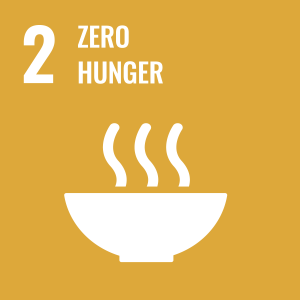

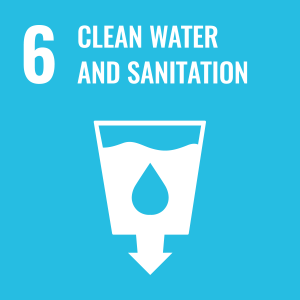
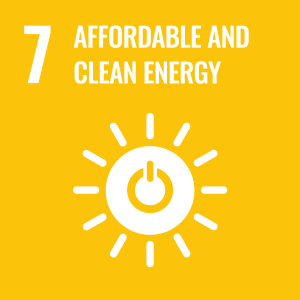
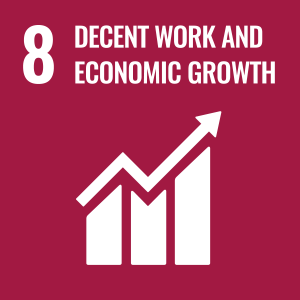

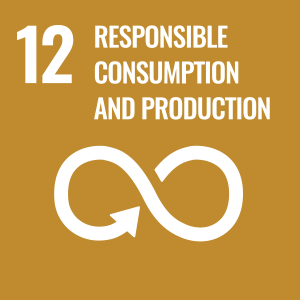
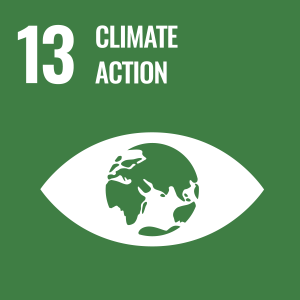
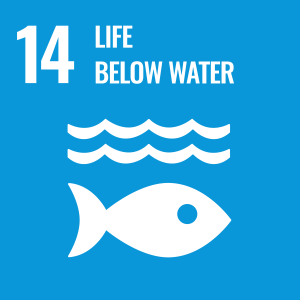
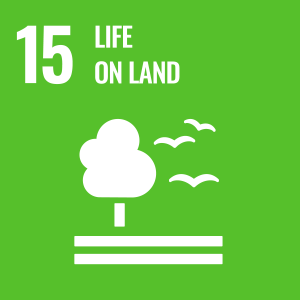
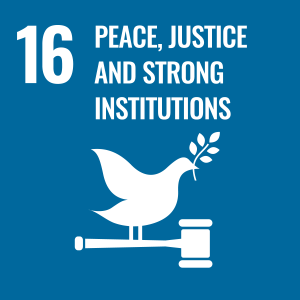
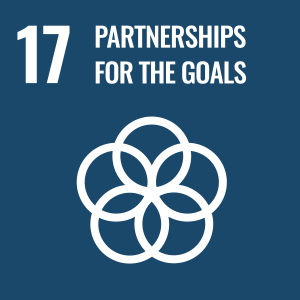
Publications
As a key mechanism for the local control of polluting activities which are harm- 16.01 ful to people, the control of statutory nuisances lies principally with local authorities. However, there is also a route whereby a private individual may prosecute such proceedings himself. This may be necessary where a local authority fails to act or where the action is against the local authority itself. Section 82 of the Environmental Protection Act I 990 (‘EPA J 990’) enables ·person aggrieved’ by a statutory nuisance to bring proceedings2 in the magistrates’ court against the person responsible.
Premises may be in such a state that they constitute a statutory nuisance to the occupier of those premises (an “internal nuisance’) or to an adjoining occupier. When premises fall into the internal nuisance category, this will, normally, fall under the health limb of section 79(1 )(a) of the Environmental Protection Act 1990 (‘EPA l 990’) since there is no element of a private or public nuisance present.1 Some actual or threatened injury to health must then be shown.
This statutory nuisance has its origins in the earliest public health legislation. It first appeared in section 8 of the Nuisances Removal Act 1855: ‘Any Accumulation or Deposit which is a Nuisance or injurious to Health.’ It was consolidated in section 92(c) of the Public Health Act 1936: ‘any accumulation or deposit which is prejudicial to health or a nuisance’ and, is now contained in the EPA 1990 with the same wording.
The recipient of an abatement notice may appeal to a magistrates’ court1 to have it quashed or to have the requirements varied to make them less onerous.2 The appeal is a ci vil matter which is commenced by way of making a complaint to the court.3 The grounds for appealing the notice need to be specified and are set down in the Statutory Nuisance (Appeals) Regulations 1995.4 All relevant grounds of appeal should be included. If in doubt whether a particular ground is relevant, it should be included. It can subsequently be withdrawn if the appellant decides not to pursue the point at the hearing, in which case it should be withdrawn as early as possible to avoid wasting legal costs or the court’s time.
Statutory nuisance is a concept that originated in the huge changes and adverse environmental conditions brought about during the Industrial Revolution in Great Britain. It was fundamental to the social legislation that was first enacted in the 1840s and 1850s, and which continued into the twentieth century in the Public Health Act of 1936. Some of this early sanitary legislation continues in the Environmental Protection Act 1990 (‘EPA 1990’), either virtually unaltered from its original formulation or in an amended form; some early formulations are to be found in other legislation, such as the Building Act 1984.
The enforcement of statutory nuisance legislation is done primarily by local authorities using powers defined in section 80 of the Environmental Protection Act CEPA 1990’). English 1ocaJ authorities enforcing the Act comprise district councils outside of Greater London and London borough councils in Greater London. Unitary authorities in non-metropolitan counties are responsible for enforcement.
The key procedural impact of the Environmental Protection Act 1990 ( •EPA 1990’), was the introduction of the abatement notice as a method of controlling statutory nuisances through administrative action. The abatement notice, once served, requires the recipient to remedy the nuisance. At the centre of control is the local authority, which has a duty to inspect for statutory nuisances and to respond to complaints. Once the authority has formed the view that there is a statutory nuisance, it must serve a notice. The question of the extent to which the authority must consult arises at this stage. Further, since the abatement notice exposes the recipient to the risk of prosecution, the notice itself must be carefully drawn within the powers of the local authority. Finally, it must be properly served.
[Display omitted] •Field studies were conducted in horses, cattle and goats using BioWorma®.•The studies were conducted in Australia across a range of climatic zones / seasons.•Significant reductions in larvae on pasture were obtained for each animal species.•Main worm species were those of commercial importance to horses, cattle and goats. A series of placebo-controlled trials were conducted in horses, cattle and goats in different seasons and bioclimatic regions of New South Wales and Queensland, Australia, to evaluate the ability of BioWorma®, a feed supplement containing the spores of Duddingtonia flagrans IAH 1297, to reduce the larval development of parasitic gastrointestinal nematodes (GIN) and their subsequent migration from faeces onto the surrounding pasture. In each trial, faeces were collected from animals harbouring a burden of nematode parasites following a period of supplementation with a placebo and again after supplementation with BioWorma. The faeces were manually placed onto pasture plots at one or two distinct geographical sites and the effect of treatment was determined by subsequent monitoring the numbers of parasitic larvae on the pasture surrounding the faecal pats at two weekly intervals over an eight week period. The results for these studies showed that administration of BioWorma at a minimum daily dose of 3 × 104 spores/kg bodyweight reduced parasite larvae in the pasture surrounding the faeces by 53–99 % over an eight week post treatment period in horses, cattle and goats in a range of bioclimatic zones and in different seasons. Overall, the studies with BioWorma show substantial reductions in GIN infectivity of pasture surrounding faeces of treated horses, cattle and goats (P
Some miscellaneous statutory nuisances under section 79(1)(h) of the Environmental Protection Act 1990 (‘EPA 1990’) remain from the Public Health Act 1936 and from the Mines and Quarries Act 1954. In none of these is the defence of “best practicable means’ available.1 The miscellaneous statutory nuisances comprise nuisances from: watercourses;tents, vans, sheds and similar structures used for human habitation; domestic water supply; and unfenced abandoned mines and quarries.
Noise-attenuating gas flow path for a compressor contained in a portable ventilator housing, the gas flow path comprising a plurality of chambers (202,210,224,232,240) interconnected by one or more flow tubes (212,228) and configured so that an impedance mismatch is created between the chambers and the flow tubes. The flow path may comprise one or more perforated tubes (234,242) located in one or more of the chambers. The compressor may be installed on a noise attenuating mounting system comprising resilient mounts (100) that cooperate to dampen vibrations generated by the compressor.
Statutory nuisances are, as their name implies, creatures of statute, which are an now consolidated and re-enacted in Part III of the Environmental Protection Act 1990 (‘EPA 1990’), or incorporated by reference into this Act. They are listed in section 79 of the 1990 Act. The list contains a range of potentia1ly offending activities with separate statutory origins.1 Each statutory nuisance was passed to deal with different problems relating to public health and the quality of life. As a result, to discuss statutory nuisances in generic terms is not always possible since differences in application result from their distinct histories.
Local authority prosecutions for breach of an abatement notice invoke the rules of evidence and procedure of the magistrates’ courts acting in their criminal capacity. These rules are more restrictive than apply in appeals against abatement notices under section 80(3) of the Environmental Protection Act 1990 (‘EPA 1990’) where the rules and procedures are based on civil law.1 Hearsay evidence that would be admissible in an appeal is subject to much more stringent conditions in criminal proceedings.
This chapter examines the following heads of statutory nuisances under section 79 of the Environmental Protection Act 1990 (‘EPA 1990’) which cause emissions to the atmosphere as follows: section 79( 1 )(b): smoke emitted from premises; section 79(1)(c): fumes or gases emitted from premises; section 79( 1 )(d): dust, steam, smell or other effluvia arising on industrial, trade or business premises; and section 79( 1 )(gb): smoke, fumes or gases emitted from any vehicle, machinery or equipment on a street so as to be prejudicial to health or a nuisance (other than from any vehicle, machinery or equipment being used for fire brigade purposes).
The principal provisions of the Human Rights Act 1998 came into force on 2 October 2000.1 Extending to England, Wales, Scotland and Northern Ireland, it incorporates into UK law the rights and freedoms set out in the European The Human Rights Act 1998 applies to al1 public authorities. The effect of this is that the articles set out in Schedule 1 to the Act shape the way individuals should be treated by public authorities. The 1998 Act is, therefore, potentially relevant to every act or decision taken by a local authority. With regard to statutory nuisance enforcement, this means that decisions whether to serve an abatement notice, or whether to commence (or discontinue with) a prosecution under section 80 of the Environmental Protection Act J 990 CEPA 1990’), have to be made in the light of the Act. Other decisions relevant
‘The procedures for prosecuting for failure to comply with an abatement notice under section 80(4) of the Environmental Protection Act 1990 (‘EPA 1990’), appealing against an abatement notice under section 80(3), or bringing summary proceedings under section 82(1), follow the usual procedural routes for such proceedings in magistrates’ courts.1 However, there are certain aspects in relation to statutory nuisance cases where particular problems and issues may arise. Notable amongst these are the evidential issues relating to the investigation of the nuisance and the use of expert technical and scientific evidence. The rules of advance disclosure can also frequently cause difficulties in practice.
This work provides a definitive account of the law on statutory nuisance for those working in the field (legal practitioners and environmental health professionals), as well as practical guidance on putting the law into practice.
Once voted the UK’s favourite river, the River Wye flows from the Welsh mountains to the Severn estuary – 150 miles through an officially recognised “national landscape”. But this idyllic picture is changing, as the river is gradually choked by waste from industrial chicken farming.
The vast amounts of waste produced, the current dominant waste operations and the many waste streams present a harmful and unsus-tainable environmental problem. Law and policy have a critical role in supporting a shift to sustainable waste management, with motivations including the need to protect health, to protect the environment and to promote resource efficiency. The issue's articles cover a broad terrain of waste law issues, taking more conventional waste law topics and extending them into their wider regulatory and social contexts. The articles look not only at regulatory approaches to tackle pollution emanating from waste but also those promoting sustainable resource management to prevent the 'wasting' of waste. Common threads include the needs to focus beyond end-of-life and consider whole life-cycle approaches, to engage with other disciplines and to incorporate social dimensions. Overall, the range of papers in this special issue underscores the complexity governing sprawling waste issues. 1 | THE RESOURCE AND WASTE CRISES Waste is unavoidable and natural to ecosystems. 1 However, the scale of the global waste crisis extends far beyond nature's carrying capacity. The vast amounts of waste produced, the current dominant waste operations and the many waste streams present a harmful and unsus-tainable environmental problem. The World Bank estimates that more than two billion tonnes of solid household waste is generated each year, with this expected to almost double by 2050. 2 Despite polluting and other negative environmental, social and economic impacts, 3 landfilling still remains one of the dominant waste management operations. It accounts for 37% of all materials disposed of, with open dumping accounting for 31% of waste. 4 These numbers vary drastically depending on country, region and context. For example, open dumping makes up 93% of waste in low-income countries, and only 2% in high-income countries. 5 Other waste management operations that are sometimes prioritised in laws and policies above landfill in so-called 'waste hiearchies' also cause harm to the environment and health. 6 Incineration and recycling, both of which have been identified as solving issues such as reducing demand on land and promoting the reuse and recovery of resources, can cause air pollution from waste incineration residues and increase cancer risks for residents near plastic recycling workshops. 7 There is no easy waste management hierarchy. 8
A forma como usamos plásticos atualmente é insustentável e inerentemente prejudicial à saúde humana e planetária, pois pressupõe um fluxo linear, e não circular, de materiais. Mesmo hoje, a maioria dos produtos plásticos é produzida a partir de combustíveis fósseis, usada brevemente e depois descartada, queimada ou aterrada como resíduo, cada destinação com um custo ambiental. Abordagens inovadoras de governança são necessárias para promover uma abordagem baseada em sistemas, fundamentada na ecologia industrial, que leve em consideração os desafios em todas as etapas do ciclo dos plásticos, garantindo a retenção dos materiais em uma economia circular. The way we currently use plastics is both unsustainable and inherently harmful to human and planetary health because it assumes a linear, not circular, flow of materials. Even today most plastic products are manufactured from fossil fuels, used only briefly and then discarded, burned or landfilled as waste, each of which has an environmental cost. Innovative governance approaches will be needed to promote a systems-based approach grounded in industrial ecology which takes into account challenges at every stage of the plastic cycle, ensuring materials are retained within a circular economy.
A solution to the ‘wicked problem’ of plastics requires their effective management, not atend-of-life, but throughout their life-cycle. Designing plastic products with the underpinningapproach of life-cycle thinking, and as part of a plastics circular economy, is one of the solutions.We specifically address this from a European Union (EU) perspective where the developmentof life-cycle thinking within regulatory frameworks is becoming established. This sitswithin the international framework presaged by UNEA Resolution 5/14, which sets out thenegotiating mandate for a global plastics treaty, and which declares that ‘plastic pollution,in marine and other environments, can be of a transboundary nature and needs to be tackled,together with its impacts, through a full lifecycle approach, taking into account national circumstancesand capabilities’.
To achieve Sustainable Development Goals (SDGs) 6, universal and equitable access to safe and affordable drinking-water quality and sanitation for all, and 10, to reduce inequality within and among countries, additional and urgent work is required. Efforts to achieve these Goals in the context of small drinking-water supplies, which are the furthest behind in regards to progress, are of particular need. Reasons for this disparity in progress include the remoteness of access to small drinking-water supplies and the lack of technical and financial capacity for monitoring supplies. The World Health Organization promote the use of Sanitary inspection (SI) as an on-site assessment of risk. Despite the potential to increase the body of knowledge and information on supplies in a region, there has been limited research into the role of citizen science and SIs. To meet SDG targets, we need to improve the reach of SIs. This study uses a mixed methods approach of quantitative on-site SI data collection and remote SI data collection via photographic images, together with qualitative data collection, collected by non-expert students, who are citizens of Malawi, as well as a panel of experts in the field of SI. Results indicate that, although further research into the topic is required prior to widescale implementation, the potential exists for citizens to conduct SI, with remote expert verification of the results using photographic images of supplies. Further documentation or guidance is required to support citizens in this process. The results highlight a critical gap in the availability of appropriate documentation for unprotected spring sources which is urgently required. The use of citizen science for SI data collection is in its infancy. However, this study indicates that there is potential to explore the use of citizen science in this area, which will contribute to achieving SDGs 6 and 10.
Sanitary inspections (SIs) are checklists of questions used for achieving/maintaining the safety of drinking-water supplies by identifying observable actual and potential sources and pathways of contamination. Despite the widespread use of SIs, the effects of training on SI response are understudied. Thirty-six spring supplies were inspected on two occasions, pre- and post-training, by an instructor from the research team and four local inspectors in the Mukono District of Uganda. SI score agreement between the instructor and each inspector was calculated using Lin’s concordance correlation coefficient. Average SI score agreement between the instructor and all inspectors increased post-training for the Yes/No answer type (0.262 to 0.490). For the risk level answer type (e.g., No, Low, Medium, High), average SI score agreement between the instructor and all inspectors increased post-training (0.301 to 0.380). Variability of SI scores between the four inspectors was calculated using coefficient of variation analysis. Average SI score variability between inspectors reduced post-training for both answer types, Yes/No (21.25 to 16.16) and risk level (24.12 to 19.62). Consistency of answer agreement between the four inspectors for each individual SI question was calculated using index of dispersion analysis. Average answer dispersion between inspectors reduced post-training for both answer types, Yes/No (0.41 to 0.27) and risk level (0.55 to 0.41). The findings indicate that training has a positive effect on improving answer agreement between inspectors. However, advanced training or tailoring of SI questions to the local context may be required where inconsistency of responses between inspectors persists, especially for the risk level answer type that requires increased use of inspector risk perception. Organisations should be aware of the potential inconsistency of results between inspectors so that this may be rectified with appropriate training and, where necessary, better SI design and customisation.
Small drinking-water supplies face particular challenges in terms of their management. Being vulnerable to contamination but often not monitored regularly nor well-maintained, small drinking-water supplies may pose consequences for health of users. Sanitary inspection (SI) is a risk assessment tool to identify and manage observable conditions of the water supply technology or circumstances in the catchment area that may favour certain hazardous events and introduce hazards which may become a risk to health. This qualitative research aimed to identify the strengths and weaknesses of the SI tool as published by the World Health Organisation to inform a review and update of the forms and to improve their robustness. The study identified a number of benefits of the approach, such as its simplicity and ease of use. Challenges were also identified, such as potential for inconsistencies in perception of risk between inspectors, in interpreting questions, and lack of follow-up action. The authors recommend a revision of the existing SI forms to address the identified challenges and development of complementary advice on possible remedial action to address identified risk factors and on basic operations and maintenance.
The World Health Organization promotes risk assessment and risk management through Water Safety Plans (WSPs) as the most effective way to manage drinking-water supplies. Despite proven advantages of this approach in other regions, WSPs are still not widely used across small drinking-water supplies in Sub Saharan Africa. The aim of this research is to identify good practices and related gaps which may assist with formal uptake of WSPs for small drinking-water supplies in Rwanda. Through semi-structured interviews with the key stakeholders involved in small drinking-water supply management across Rwanda, the aim is achieved through the investigation of the following: (i) current drinking-water management challenges; (ii) stakeholder collaboration and data management activities including reporting of information; and (iii) the regulatory and policy environment. The use and awareness of WSPs in Rwanda was confirmed as low. However certain drinking-water management activities which align with the WSP methodology are being carried out. These include catchment management and stakeholder collaboration. Although legislation and policy are in place in Rwanda, communication and training of methods to implement WSPs are required to sustainably embed WSPs into practice. Several elements, including community engagement, systematic review of risks and data management, require greater focus to align with the WSP methodology. Respondents highlighted key drinking-water management challenges, including reactive budgeting and lack of sector prioritization, which could benefit from formal WSP implementation.
Owing to the managerial and regulatory setup of Private Water Supplies (PWS) in England and Wales, the attention and resource required to achieve ‘wholesome’ drinking-water, a regulatory term reflecting quality standards, is often limited. The requirement to risk assess PWS was first included in the English and Welsh Regulations in 2009 and 2010 respectively. However, compliance rates with risk assessment requirements remain low with concerns raised regarding the lack of subsequent action. Using a mixed methods approach of interviews and surveys, this research seeks to: (i) identify available data sources for the completion of risk assessments by Local Authorities; (ii) understand factors which facilitate or hinder decisions made and action taken based on risk assessments; (iii) investigate the influence of the regulatory environment on (i) and (ii); and (iv) pose suggestions for more efficient data use to help improve the drinking-water quality of PWS in England and Wales. Findings highlight gaps in the legislation which impact the national level understanding of PWS drinking-water quality and subsequently impact national level prioritization and resource allocation. The assigned stakeholders responsible for risk assessment are reviewed and discussed. Recommendations include the development of an environmental health database to support institutional data sharing; a greater recognition of the differing resource type and enforcement strategies required to undertake risk assessment, in comparison to water quality sampling alone; introduction of Sanitary Inspection forms to PWS operators and financial support structures to facilitate remedial action. Methods which may support reduced sampling data, such as hydrogeological modeling, are discussed.
It is said that today we live in a risk society; that we are more conscious of the value of life and of the various hazards which we may encounter. Risk has become legitimised. It as a matter of public concern and legislation is now formulated (both at the European level and within the U.K.) making risk assessment a formal requirement in many areas of environmental law. The recent food safety concerns (BSE, for example, not to mention the issue of genetically modified food) have highlighted the importance of risk assessment as a technique in the enforcement of the law. The regulation of risk assessment is now appearing in other areas of environmental law, such as the regulation of contaminated land, where the risks to be assessed are not only risks to human beings but also risks to the environment in the broadest sense. Risk assessment moves from a management technique to an enforceable legal obligation. The enforcement of this obligation requires a knowledge of the range of risks and the techniques for their assessment. It therefore involves other expert disciplines, all within a legal context. In many environmental offences, a defence may be available that the "best practicable means" were used or that "all due diligence" was exercised. This paper looks at the way in which risk assessment is becoming regulated and is used in litigation both by enforcement agencies and by the defence.
The European Regulation on nutrition and health claims on foods (Nutrition and Health Claims Regulation: European Commission No. 1924/2006) establishes, for the first time, a common framework for the regulation of such claims across the European Union (EU). The opportunities for product innovation arising from this new legislation combined with protection of consumer interest in respect of controlling misleading advertising, while at the same time promoting public health, are noteworthy. But such opportunities need to be evaluated against the burden on industry of the need to undertake significant research activity into these claims and to present a scientific substantiation to satisfy the procedure for approval. Whether this legislation is driving product innovation and the development of healthy and nutritional food or whether it is a barrier to such developments is an area in need of investigation. The EU-funded project REDICLAIM is currently considering these issues and the impact of the Nutrition and Health Claims Regulation especially in relation to 'reduction of disease risk' claims. This article establishes the issues surrounding the common framework of health legislation and sets out the work programme for REDICLAIM.
This book provides discussion on the impact of reusing polymers such as plastic and rubber on the environment.
The approach traditionally adopted in the UK for the implementation of European Community laws affecting the environment is based on a regulatory model of criminal offences of strict liability. This means that environmental pollution offences are enforced in the mainstream criminal courts and are subject to criminal penalties of fines and/or imprisonment. The article considers in particular, offences involving water pollution and waste management and the defences available in respect of these crimes. It looks at the penalties imposed by the criminal courts and the guidelines available to determine the appropriate level of sentencing in considering the question 'does crime pay?'.
One of the purposes of this book is to provide the basic information that an environmental health practitioner (EHP) or officer (EHO)1 anywhere in the world can use to develop their competencies. Chapter 1 included a section that set out what is understood by the term 'environmental health' and also what can be considered 'an objective of environmental health'. As hopefully was made apparent, 'environmental health' is something more than that which an EHP 'does' as is well illustrated by World Health Organization (WHO) documents on the topic.2
Despite its long history, statutory nuisance law is still considered important in dealing with localised environmental problems. But it is an area of law that is now beginning to creak - the result of both its historical origins and the attitude of contemporary judges to its modern application. Key recent decisions of the British courts are examined, and the judiciary is shown to have adopted an unduly narrow approach and one that is based on a misinterpretation of legislative intention. A detailed examination of Parliamentary debates in the middle of the nineteenth century during the development of statutory nuisance laws shows that the concept was promoted as being broad, flexible and expansive. Modern courts have singularly failed to adapt statutory nuisance to contemporary needs, a lost opportunity since the statutory nuisance regime can provide an effective means for local government to deal rapidly with environmental problems as well as an accessible remedy for the private individual. © 2006 Oxford University Press.
Background: While functional foods offer promise for public health and innovation in the food industry, the efficiency of such foods should be assured to protect consumers from misleading claims. Globally, many countries regulate the communication of the health effects of such foods to final consumers. Scope and approach: In the European Union (EU), the use of health claims was harmonized in 2006. All claims need to be scientifically assessed by the European Food Safety Authority (EFSA) and pre-approved. Implementing the regulation has involved a steep learning curve for stakeholders, resulting in many health claims being rejected. The EU-funded REDICLAIM project used existing guidance documents, analyses of Scientific Opinions on new health claim applications, and a series of interviews with experts involved in such applications to identify key points in the process of authorizing new health claims. Key findings and conclusions: Recommendations for the successful substantiation of new health claims in the EU were prepared. The substantiation of health claims is primarily based on human efficacy studies, and greater resources are required to authorize more innovative claims. The reported recommendations should be seen as a starting point for researchers in the area of nutrition and food technology, and for those dealing with functional foods, including the food industry.
This 20th edition continues as a first point of reference, reviewing the core principles, techniques and competencies, and then outlining the specialist subjects.
Q&A;A Land Law offers a lifeline to students revising for exams.
This study was commissioned by the European Parliament’s Policy Department for Citizens’ Rights and Constitutional Affairs at the request of the JURI Committee. It looks at the interrelation between the Consumer Sales and Guarantee Directive (CSD) and the Ecodesign Directive (EDD) with respect to guarantees and product expected lifetime. Through legal research and stakeholder surveys, it develops an EU lifespan guarantee model, which could be implemented by amendments to the proposal for an Online Sales Directive (OSD) and the EDD. It recommends extending the EDD to include the lifespan and extending the limitation period of the OSD. A commercial guarantee for the lifespan of a product is also suggested.
"In the 10-volume Berkshire Encyclopedia of Sustainability experts around the world provide authoritative coverage of the growing body of knowledge about ways to restore the planet.
No matter how good your research and study skills, the ultimate test for the law student is the exam. This book explains how to tackle problem and essay questions typically found in exam papers, and how to draft successful answers.
EXECUTIVE SUMMARY The legal gap analysis on waste data management represents an important step in addressing waste management challenges in Kenya. The analysis determines the extent to which policies and laws on waste management meet the requirements on waste data and information as set out in the Sustainable Waste Management Act (2022) and the draft Extended Producer Responsibility (EPR) Regulations (2023). In pursuit of this aim, the gaps and recommendations from this analysis are a product of broad and careful consideration of waste management policies and laws by reference to the Sustainable Waste Management Act (2002). The legal gaps from the analysis include: (i) lack of clear and consistent definitions of waste and waste categories; (ii) lack of precise formulation of the duty of care, including a duty to collect data, imposed within the waste management sector at national and county levels; (iii) limited data collection and recording requirements; (iv) inconsistent approach to informal sector between counties; (v) varied provisions on licencing; (vi) unclear purposes of waste data collection and reporting; (vii) lack of transparency; and (viii) gaps in data management under the latest proposed EPR Regulations (2023). Most of these gaps are linked. If there is no consistent definition of waste and types of waste, for example, then the collected data on waste may be neither consistent nor comparable, thereby making data less useful. Similarly, the purpose of data collection and reporting should underpin waste data requirements in the legal landscape and aid transparency, and varied licensing provisions results in inconsistent data collection. The gaps within the legal landscape on waste data requirements can therefore not be fully addressed in siloes. Moreover, the gaps identified are exacerbated by challenges in identifying the most recent and up-to-date documents, which inhibit understanding of licensing and waste data requirements. The varying and inconsistent approaches are also exacerbated by lack of cross-referencing between and clarity in setting out the hierarchy of relevant legislation. The recommendations made throughout the report are mutually supportive and complementary. Waste management laws should be amended to (i) provide for a harmonised definition of ‘waste’ across national and county levels and ensure consistency of data reporting; (ii) impose a duty of care upon all stakeholders in the waste management chain to support the building of an approach which monitors and measures the production and management of waste; (iii) specify and consistently implement and apply the system of reporting waste data in details; (iv) incorporate the informal sector into the formal sector, so that they are also subject to data collection and reporting requirements; (v) transition to a licensing system that aligns data collection and reporting duties; (vi) clearly and consistently state the purpose of the collection and reporting of data; and (vii) in relation to the proposed EPR regulations: clarify data requirements, develop targets for particular types of waste, ensuring consistency in reporting systems, and insert cross-referencing to other laws throughout.
Extended Producer Responsibility (EPR) places liability, physical, financial, and/or informative responsibility for a product throughout its life cycle on its producer. Implementing such schemes is expected to result in many environmental and social benefits. Yet, academic and practitioner discussions on the mechanisms focus on environmental impacts, whereas social dimensions of EPR are often side-lined. This short communication contributes to addressing this gap by establishing a research agenda for the justice dimensions of EPR. For this purpose, initial links between EPR and justice – specifically waste colonialism, procedural justice, recognition justice, distributive justice, intra- and intergenerational equity, waste justice, and corrective justice – are set out, including where it affects products in their life cycles and examples of which stakeholders may be impacted, with plastic waste used to provide examples.
At the heart of the body of environmental controls available to local councils lies the concept of statutory nuisance under Part III of the Environmental Protection Act 1990 ('the Act'). Local councils have a duty to investigate their areas from time to time seeking for the existence of statutory nuisances. In reality, the use of their powers is usually triggered by a complaint and, indeed, the Act specifically empowers them to follow up such complaints where it is reasonably practicable that they should do so. As is well known, the prime weapon is the abatement notice which must be served where the officers have formed the view that a statutory nuisance exists. An appeal to the magistrates' court lies within 21 days of the service of this notice. The effect of an appeal is normally to suspend the notice until the appeal has been heard. In the event that no appeal is made and yet the notice is not complied with, the local authority have a discretion to prosecute. It can be seen that these procedures mix administrative law with civil and criminal outcomes. The service of a notice is an administrative act and an appeal against it would be civil in nature, whereas a prosecution for failure to comply with a notice would be criminal in nature. But, both sets of proceedings take place in the magistrates' court with the potential for confusion in terms of the rules of evidence and the procedures that each entail. What should be a relatively straightforward procedure has become one where the complexities of the law and the variations from one case to another mean that drafting a watertight abatement notice has become an unrealised ambition by many an officer. It might not be an exaggeration to suggest that most abatement notices have become appealable on such grounds as these. If the interpretation of the requirements of section 80(1) means that officers could simply serve notices which required an abatement of the nuisance without specifying the manner of the abatement, then the problem might be resolved. A number of Divisional Court cases have considered this issue but without any satisfactory resolution. Some of these have now gone to the Court of Appeal and the latest of these has attempted to cut through this Gordian knot by taking this route to the interpretation of the statute.
This text provides a straightforward overview of environmental law, dealing with fundamental principles. The field of environmental law is wide-ranging and ...
Abstract This article highlights the importance of differentiating between environmental law and climate law in India, and, in doing so, analyses what counts as climate law in that country. It identifies three overarching approaches (trickle-down; Environmental Impact Assessment as climate law; and human rights law and climate change) that the current literature adopts to study and analyse climate law in India. We argue that none of these approaches comprehensively covers climate change mitigation measures adopted in this country. We propose an alternative approach to the analysis of climate law in India, which we call 'administrative layering'. Accordingly, we outline a three-step process to identify and conceptualize climate law in India.
Companies are increasingly seeking to adopt a Circular Economy (CE) approach when aiming for greater corporate sustainability. In Ethiopia, a country rapidly industrializing, a CE approach in line with Ethiopia’s Green Manufacturing Strategy offers businesses a more sustainable and efficient economic approach than linear value chains. This study evaluates approaches towards implementing CE principles into novel business practices, focusing on the crucial role of senior business managers. Drawing on a sample of 145 senior managers of Ethiopian textiles and agro-food processing companies, we analysed their knowledge, attitudes, and practices vis-à-vis CE. The findings show that managers have high levels of knowledge about CE and hold positive attitudes towards it, although their companies’ practices did not reflect this. Logistic regression analysis showed that environmental management training, business circularity strategies, and the type of managerial positions are the major determinants of managers’ willingness to adopt circular practices. A critical finding was that participation in environmental management training and their managerial status negatively affect the willingness to adopt circular practices. Based on these findings, the study offers key recommendations focused on the potential to build CE models at the corporate level in developing countries, such as Ethiopia, through policy change and improved education and training.
This is an essential text for practitioners at all levels in the legal and environmental health professions as well as for those working for community groups and consumer organisations. It is equally indispensable for private individuals who wish to challenge local authority decisions or to commence their own proceedings in the magistrates' courts against the 'nuisance offender'. The law of statutory nuisance was first formulated in the middle of the nineteenth century, yet it continues to raise all sorts of difficulties for practitioners, lawyers and the courts. This book considers the origins of statutory nuisance, analyses its conceptual basis, and considers each of the statutory nuisances set out and incorporated into the Environmental Protection Act 1990. Particular emphasis is given to the most problematic statutory nuisances, such as noise nuisance and those arising within residential premises. This is an authoritative book, which takes the reader through the practical and legal issues associated with each statutory nuisance and focuses on the problems the local authorities face in enforcing this area of law as well as for those advising defendants. The role, powers and duties of the local authorities, the problems associated with the drafting of abatement notices and with the prosecution of nuisances are analysed. Also covered are defences and proceedings brought by private individuals against neighbours and local authority landlords. The focus is also on what happens in court. The procedure and requirements in appeals against notices and in prosecutions are considered in detail, as are the grounds for bringing further appeals and judicial review. Important recent decisions of the Court of Appeal and House of Lords, such as Falmouth Truro PHA, ex p South-West Water, Baxter v Camden and Oakley v Birmingham, are analysed. The implications of recent legislation such as the Human Rights Act 1998 and the Regulation of Investigatory Powers Act 2000 are also considered.
This is the first of two volumes based on papers presented at a March 1998 conference on "Contemporary Issues in Property Law" organized under the auspices ...
The purpose of this book is to present an overview of the latest research, policy, practitioner, academic and international thinking on water security – an issue that, like water governance a few years ago, has developed much policy ...
Purpose - The purpose of this paper is to explore the impact that property rights can have on the implementation of circular waste economies, in which waste is reused, recycled or recovered, within the European Union's Waste Framework Directive. Design/methodology/approach- A theoretical lens is applied to the legal definition as well as production and treatment cycle of waste to understand the property rights that can exist in waste. Findings -This paper argues that even though different property rights regimes can apply to waste during its creation, disposal and recovery, the waste management regulatory and legal system is currently predominantly set up to support waste within classic forms of private property ownership. This tends towards commodification and linear systems, which are at odds with an approach that treats waste as a primary wanted resource rather than an unwanted by-product. It is recommended that adopting state or communal property approaches instead could affect systemic transformative change by facilitating the reconceptualisation of waste as a resource for everyone to use. Research limitations/implications - The property rights issues are only one dimension of a bigger puzzle. The roles of social conceptualisation, norms, regulations and policies in pursuing circular strategies are only touched upon, but not fully explored in this paper. These provide other avenues that can be underpinned by certain property regimes to transition to circular economies. Originality/value - The literature focused on property rights in waste has been very limited to date. To the best of the authors' knowledge, this paper is the first to consider this question in detail from a legal perspective.
The Millennium Development Goals included a target to halve the proportion of people without sustainable access to safe drinking water by 2015 – a right recognized as fundamental to human needs. Small independent water endors are often the only water supply option in peri-urban neighbourhoods in developing countries and fill a critical gap in the municipal system, but there is concern about the quality and price of their water. Such vendors need to be recognized and regulated due to their role in meeting basic water needs. This article reflects on the lack of regulation and discusses a recent multidisciplinary research project in Kenya and Ethiopia that considered whether there is a case for regulation of competition, price and quality. It concludes that recognizing small independent water vendors as part of a regulatory framework will result in increased access to water for the poor and assist in the realization of the MDGs; the right to water; and, intergenerational equity.
0.1 Purpose of this Handbook. The Handbook should help the managers of a humanitarian demining project understand the cultural, ethical and legal framework of the host country. The Guidelines developed and presented in the Handbook should promote the goodwill between the local community and the contractors that is vital for successful and efficient demining. This will assist in delivering the Project to time, cost and quality. Throughout the Handbook, where a Guideline emerges from the narrative, its reference number is shown in the right hand margin. 1 Scope. Our intention in this Handbook is to promote an awareness of the cultural issues that might be of significance to all humanitarian demining projects. However, we appreciate the difficulties of attempting to embrace in a single Handbook the religious and cultural requirements of all the communities of the world. The state of government in countries where demining is carried out can range from completely broken down at all levels to fully functioning, with effective policing of law and order. The Handbook is intended for use whatever the extent and effectiveness of national governance. The Handbook also incorporates the human development goals of the UN.
Q&A;A Equity and Trusts offers a lifeline to students revising for exams.
Conspicuous consumption has become the hallmark of the individualist model of society in the 21st century and the impacts of this consumption on the environment mean that the necessity to develop sustainable consumption patterns has become a central policy focus. Extended producer responsibility has already begun to focus on the product and its environmental impact. A new approach has now been canvassed by the European Community which proposes a radical revision in the way in which environmental impacts should be evaluated and controlled. Integrated product policy (IPP) is a proposal which reflects the problems of a society driven by consumerism. In this article the author outlines IPP and the principles behind it; looks at the European evolution of IPP; describes the White Paper proposals for establishing the framework conditions for continuous environmental improvement; and, examines the current framework and the viability of the new paradigm before providing some conclusions.
The hazards of the legal system may appear to leave the control of pollution subject to chance, whether that chance is the presence of a private litigator seeking a remedy for damage to his property or person, or an enforcement agency sufficiently motivated and resourced to handle the prospect of criminal litigation. But what is the alternative? It is a generally accepted principle that the polluter should pay, but that is only one side of the coin. In imposing liability on the polluter the result should be the remediation of the harm done to the environment or the prevention of any recurrence of the harm. Punishment may be an appropriate route for a society concerned with protection of the environment, but retribution needs to be matched with the practical reality of a protected environment. In that sense, as has been argued, the threat of civil litigation or criminal prosecution may be sufficient to achieve the desired aim. However, these approaches may be set alongside an arsenal of weapons above and beyond the legal system. Economic initiatives such as taxation have begun to be explored. Taxation on leaded petrol and on waste destined for landfill has had an effect in changing practices. The results need to be explored in more detail. For instance, the use of cars in the United Kingdom has not declined as a result of the imposition of increased taxation on petrol, and the imposition of landfill tax, while diverting waste to other disposal methods, may similarly have failed to halt the overall production of waste. Emissions trading schemes are another route to controlling levels of pollution. While these mechanisms are to be applauded to the extent that they are successful in preventing pollution, they should be seen as adjuncts, not alternatives, to a criminal enforcement system. While the process of the criminal enforcement of regulation may carry its own hazards, nevertheless it must remain at the heart of a system for environmental protection. Taxation and other economic controls may play a part, but the decriminalisation of environmental damage would convey the wrong message to society in general.
A collection of new papers by more than 20 United Kingdom and International experts on general and specific issues relating to the reform of all aspects of ...
The Nutrition and Health Claims Regulation (EC No. 1924/2006) has established a common framework for the regulation of nutrition and health claims used on foods across the European Union. This regulation aims to provide the European food industry opportunities for product innovation whilst protecting consumer interests with respect to controlling misleading advertising and promoting public health. However, in order to satisfy the approval of new health claims procedure particularly for new ‘reduction of disease risk’ claims [Article 14(1)(a) claims] , significant research activity is required by industry to scientifically substantiate the claims they wish to make. There is a need to establish whether the implementation of this legislation is in fact driving product innovation and the development of healthy foods or whether it forms a barrier to such developments. The EU-funded REDICLAIM project is currently considering these issues. This article describes the project’s preliminary results and outlines the further programme of work.
This book provides discussion on the impact of reusing polymers such as plastic and rubber on the environment.
A new piece of European legislation, the Ecodesign Directive (2009/125/EC) came into effect on 20 November 2009 and is to be implemented by Member States by November 20, 2010. This covers energy-using products under an earlier directive (the Energy using Products Directive) but also extends the range of products covered to include those which are related to energy use even if they do not actually use energy directly such as construction materials and fittings. So it covers 'any goods having an impact on energy consumption during use'. A product list is to be developed by the European Commission. Reduction in energy consumption is posited in the European Climate Change Programme (European Commission, 2006) and climate change is a priority in the Sixth Community Environment Programme (Decision No 1600/2002/EC of the European Parliament and of the Council). Climate change also now appears as an objective of the European Union in the Lisbon Treaty. Ecodesign is a key element of the European Commission's Integrated Product Policy and appears in the Commission Communication of 18 June 2003 'Integrated Product Policy - Building on Environmental Life Cycle Thinking'. It is also a key innovative aspect appearing in the Sixth Community Environment Action Programme. Building legislation on a life cycle approach is radical and novel given that most environmental impacts are regulated on a vertical basis where legislation is linked to the process rather than the product. This paper argues that the best way forward for achieving sustainability is to revolutionise the regulatory process by adopting a life cycle approach to the environmental impacts of products as the basis for legislation. It examines the impact of the Ecodesign Directive and seeks to evaluate the pros and cons of such an approach.
“Integrated Product Policy: Products and their Impact on Energy”
In this Chapter we examine the notion of water as a common treasury, and the implications that this characterisation of water has for property rights in water. We argue that a property rights system centred on neo-liberal conceptions of absolute private ownership, allowing private dominion over water and its commodification, is inappropriate for water and subverts its role as a common treasury. To enable water to function effectively as a common treasury, we argue, a more appropriate property model is one that emphasises and facilitates collaboration and co-operation rather than competition — in other words, a property rights system which acknowledges and promotes communal property in the forms we describe below.
This book provides discussion on the impact of reusing polymers such as plastic and rubber on the environment.
Waste can be conceived as pollution or a resource; pollution in relation to the vast amounts of waste produced that need to be managed, while a resource in that waste can be used as the virgin material in production processes. In both cases, waste is currently most commonly treated as an economic good and thus commodified as a result of approaching the ownership of goods from a Blackstonian absolute dominion perspective. In this paper we present a critique of this classic form of property ownership as it aids linear cradle to grave approaches to waste. In advocating a move towards circular systems for using waste, we propose the adopting of a Lockean conception of property. For this purpose we address three issues: (1) current property rights in waste; (2) alternative approaches to waste; and (3) impacts of applying Locke’s theory. First, we address when an object becomes classified as waste, who owns waste and when ownership changes hands. In discussing the latter, a critique of the classic forms of property ownership that support linear approaches is presented. Secondly, we investigate appropriate property regimes to address these critiques, namely extended producer responsibility and common-pool resource approaches. Finally, the seminal example of industrial symbiosis in Kalundborg, Denmark, is used to provide context for discussions using Locke’s property theory on the feasibility and implications of our property rights discussions and recommendations. Industrial symbiosis is a structure where waste is exchanged between industries within a given network or grouping forming micro-circular economies. In this symbiotic network, waste is thus diverted from landfill and other forms of disposal, thereby lessening the impact of the waste stream on the environment and the economy.
All creatures including birds, animals and humans are at risk from plastic waste in the environment and the challenge of preventing it entering rivers, oceans, the atmosphere and land is urgent requiring our full attention.1 Yet, at the same time, plastics are a valuable material for preserving food, and they are used in textiles, transportation, construction and personal care products. Indeed, a world without plastics is unimaginable. The challenge then, is to deal with the escape of waste plastics in a way which enhances the circular economy – a closed-loop system where endof-service-life-objects become a resource. For most plastics like packaging, closed-loop systems already exist which can be improved through increasing collection and reuse/recycling. However, there are also uncontrolled losses of plastic materials that happen as “fugitive” emissions like tyre-wear or when laundering garments made from plastic. The problem of plastics waste is linked to the issue of mass consumption in the industrialised world, which has led to increasing production, the proliferation of goods, and the generation of waste. In highly industrialised societies, products are often treated as throwaway or ‘single-use’ items which not only increase the waste burden including fugitive emissions during their use phase, but also use raw materials in their manufacture thereby depleting the virgin resources of the planet. In the developing world, these problems exist too but are often exacerbated by the import and accumulation of plastic waste from the global north despite recent bans on such trade.
This book explains how to tackle problem and essay questions typically found in exampapers, and how to draft successful answers.
The book is divided into chapters covering each major topic on land law courses, andcontains approximately fifty questions and answers designed to test even ...
This book explains how to tackle successfully the sort of problems and essay questionstypically found in exam papers.
Support for a transition to a ‘Circular Economy’ (CE) has rapidly gained momentum over the last decade, driven to a large extent by the strong commitment of some public authorities – particularly the Chinese government and the European Union (Su et al., 2013; European Commission, 2015; McDowall et al., 2017) – to move away from the linear business model of ‘take-make-waste’ that is no longer sustainable. In the wake of an unprecedented level of attention to the risks related to waste management and plastic pollution, and a consequential rise in related policies around the world, CE regulation is an expanding element of the political and regulatory agenda. Many countries have elaborated comprehensive CE policy packages which include legislative proposals aimed at keeping resources in use as long as possible, extracting maximum value from them, minimizing waste and promoting resource efficiency (Fitch-Roy et al., 2020). CE policies promise to “reshape global industrial systems” by promoting the policy objective of a zero-waste economy and “revert societal and environmental effects to earlier stages in which planetary boundaries were not exceeded” (Borrello et al., 2020).

